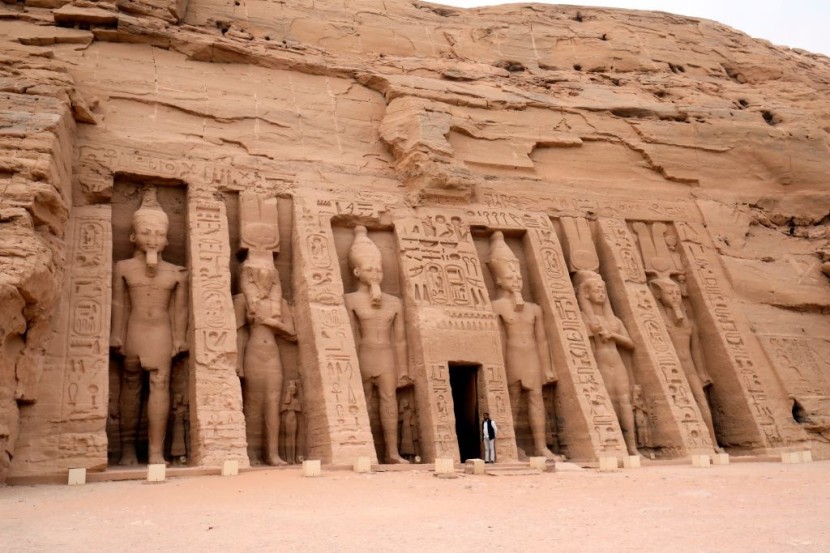
Egyptologists uncover offerings inside a temple dedicated to Hathor, the goddess of love and fertility, in a pile of rubbish from 3,500 years back in the past in Luxor. One can imagine back several millennia, she was the go-to for Egyptians with love-related problems.
According to sources, the artifacts were offered to get the goddesses favor, and one researcher commented that Hathor is one of the most popular deities in ancient Egypt. It was by accident finding them in the ancient rubbish heap while doing the excavations in the temple.
Offerings as artifacts found in 500 years old temple
The worship place connected to the Temple of Hatshepsut was carved into the rock cliff several thousand years ago in Deir el-Bahari, reported the Daily Mail.
Included in the precious artifacts were figures that were painted bright blue, with many cups and decorative plates, bowls, and even ceramic long-necked vessels with breast designs. They signified rebirth from the afterlife. While the experts rebuilt one of the tombs in the Temple of Hatshepsut, they encountered the ancient Egyptian refuse.
Excavation head Dr. Patryk Chudzik, from the University of Warsaw supervises the temple, said that there were fears of structural weakness that might cause an accidental collapse. He added that they also wanted to keep the place intact, noted Arkeonews.
He stated that when inside, the debris has not been touched for a long time and cleaned where it lay on the graves, standing about three feet high. The pile of rubble is thought to be 500 years old, more than Hatshepsut's temple itself. All the offerings inside the temple dedicated to Hathor were discovered as artifacts.
Deity of the temple
Hathor is a goddess in Egyptian mythology who represents the sky, women, love, and child-bearing; people started to worship her in the third millennium BC, cited the Smithsonian Mag.
Other associations to the goddess areas hosted who met the dead with food and drinks, also meeting them at another stage of the spiritual realm.
Mr. Chudzik thinks the deity was very popular that locals with their offering had overrun the temple. Those responsible for the temple's upkeep had to move the gifts to other parts of the structure. That he said is how the pile of stuff built up in the centuries that followed later.
Who is interred in the ancient grave has not been answered yet; the scholar added in the antiquated past when the tomb fell to disarray and robbers? All the items associated with the one in the tomb are close to pharaoh Mentuhotep II, his wife or son.
Luxor is the oldest site in all of Egypt, with the distinction of where the Valley of the Kings is found, which is relevant to the Nile Kingdom's history.
From the 1800s, many mummies and buildings were discovered and dug up, and it was called the 'Great Necropolis of Millions of Years of Pharaoh.'
Hatshepsut, a female Pharaoh, built the Temple of Hatshepsut in Luxor to worship the goods. Some stories say it was her adviser, Senenmut had designed the temple and her lover; rumored to be more than a mere adviser. She took the crown in 1,473BC, wore pharaonic garb as well, he reign was peaceful died in 1458 BC.
All the offerings inside the temple were dedicated to Hathor when the female pharaoh built the temple as one of the most well-known in the ancient world.
Related Article : Ancient Egypt's Legendary Temple of the Sun Discovered After 4,500 Years Hidden Under the Sands
© 2025 HNGN, All rights reserved. Do not reproduce without permission.








